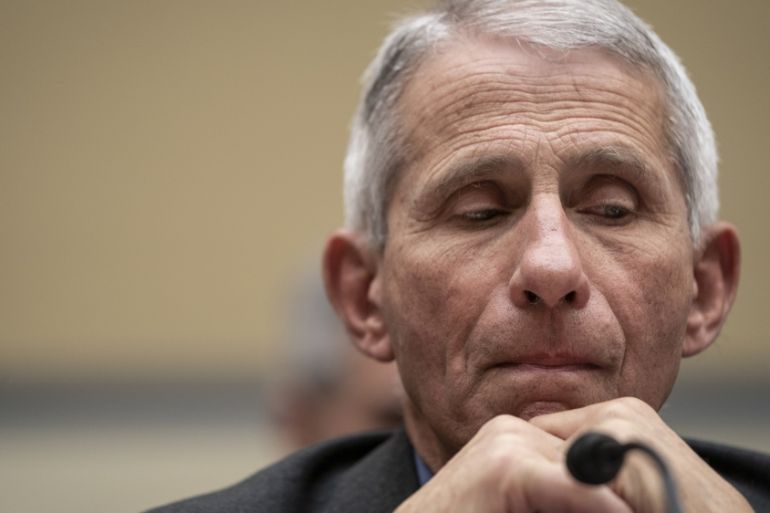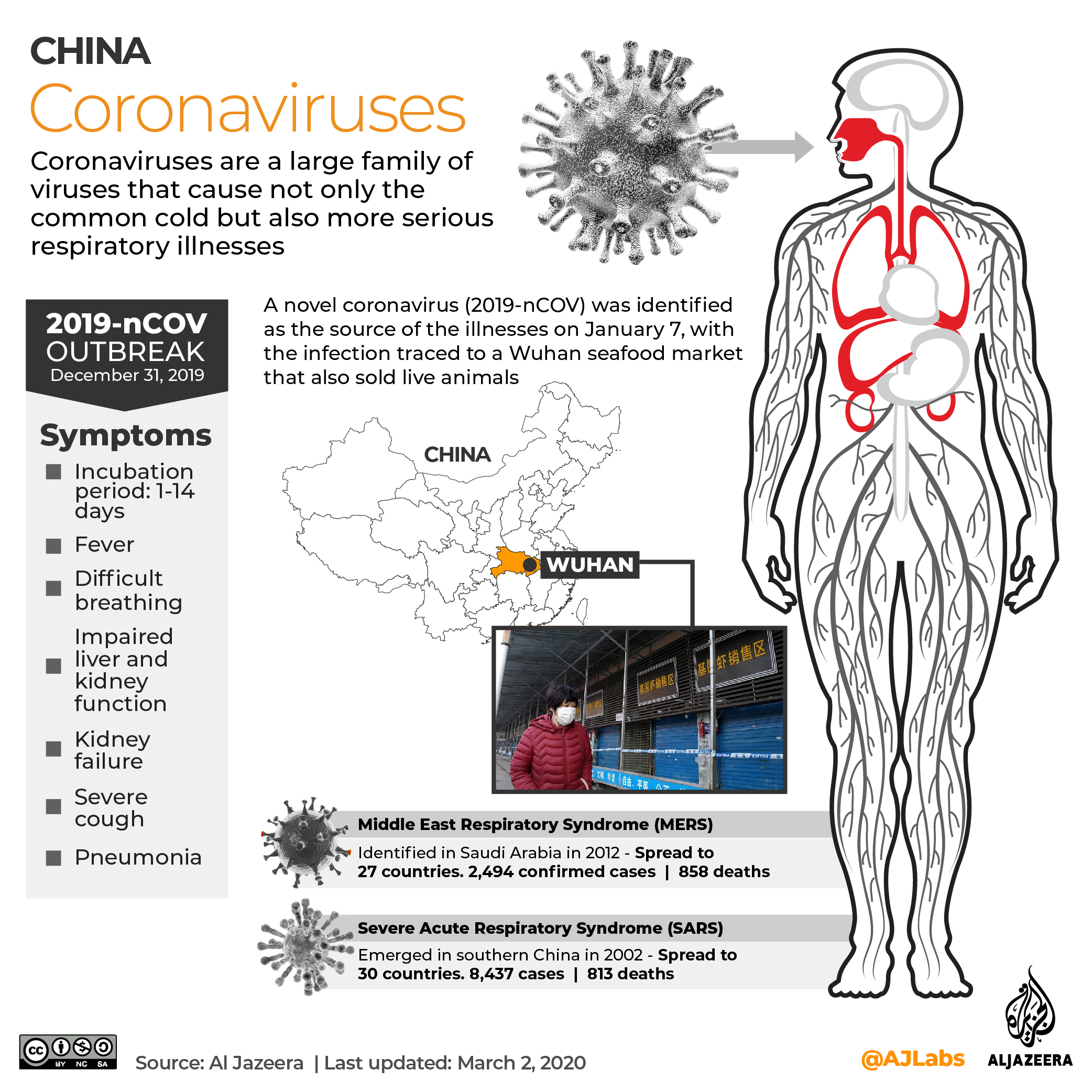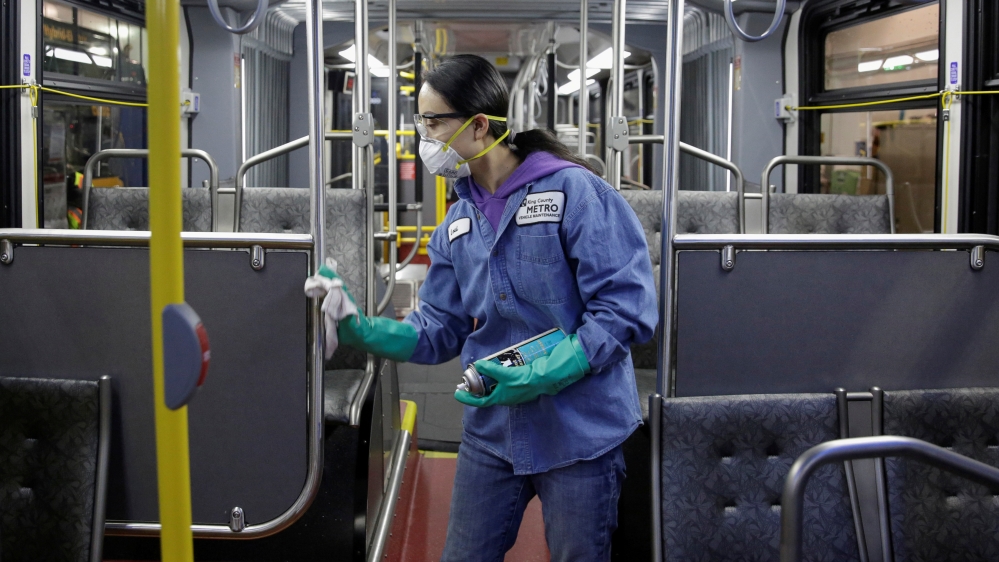Worst still to come in US coronavirus outbreak: Expert
Concerns mount about US ability to contain the virus as the WHO declares it a pandemic.

The coronavirus situation in the United States is “going to get worse”, Dr Anthony Fauci, director of the National Institute of Allergy and Infectious Diseases, told politicians in Washington DC on Wednesday, saying the virus is killing people at a higher rate than that of the flu.
“It is 10 times more lethal than the seasonal flu,” Fauci told the House Oversight and Reform Committee.
Keep reading
list of 3 itemsCoronavirus: Which countries have confirmed cases?
What happens if you catch the new coronavirus?
The mortality rate for the seasonal flu is roughly 0.1 percent, Fauci said. When all possible cases are considered, the coronavirus has a mortality rate of about 1 percent, Fauci estimated.
The coronavirus has already infected over 1,000 people and been found in about 40 US states, according to reports. At least 31 people have died from the illness in the US.
When asked by a member of the committee if the virus is expected to spread even further, Fauci replied: “Yes, it is.”
Authorities at state and local levels have taken steps to stop the spread of the virus, including cancellations of large gatherings. Democratic presidential candidates former Vice President Joe Biden and Senator Bernie Sanders both cancelled rallies in Cleveland. Washington Governor Jay Inslee on Wednesday banned gatherings of more than 250 people and said he may soon close schools to slow the spread of coronavirus.
But community spread of the virus has outpaced these efforts, Fauci warned.
“How much worse we’ll get will depend on our ability to do two things: to contain the influx of people who are infected coming from the outside, and the ability to contain and mitigate within our own country”, he said.
The US is facing a lack of testing kits for the virus, among other challenges. Centers for Disease Control and Prevention Director Dr Robert Redfield said during the hearing that the US public health system could test about 75,000 people.
Government response
President Donald Trump has faced criticism for his administration’s response to the virus. Following an historic drop in the US stock exchange on Monday, Trump announced a series of measures and proposals to combat the economic effects of the virus.
Global markets have continued to dramatically bounce up and down in the ensuing days.
Trump told a news conference on Monday evening that the stock market turbulence was “very, very dramatic and we have a great economy, we have a strong economy, but this blindsided the world and I think we’ve handled it very, very well”.
The Trump administration announced on Tuesday that insurance companies would waive copays for tests and floated a payroll tax reduction to stem the economic fallout.
On Wednesday, Treasury Secretary Steven Mnuchin said the White House was examining tax relief measures, loan guarantees, reimbursing workers for lost pay, aid to small and mid-sized businesses, and support for airlines, hotels and other travel businesses.
Mnuchin likened the coronavirus outbreak to a hurricane and said the costs needed to be picked up. But he said Trump felt strongly that US companies needed to be protected, not bailed out.
“Whatever we do, kind of in the next 48 hours, that’s just the first step. We’ll be back. And I think there’s big bipartisan support. People understand that we have to help small and medium-sized businesses and certain industries,” Mnuchin told a House of Representatives committee.

The US House of Representatives is currently writing a coronavirus response bill and plans to vote on it on Thursday, Majority Leader Steny Hoyer said on Wednesday.
Democrats, who control the chamber, are looking at including unemployment insurance, paid sick leave, and family and medical leave in the bill. Hoyer said that the payroll tax cut Trump proposed, is a “non-starter” and would not be included in the legislation.
Senate Democrats are expected to request that Trump declare a national emergency, which could ease restrictions on importing coronavirus tests, among other measures.
Health Secretary Alex Azar said federal leaders were working with local officials in the hardest-hit states, including Washington, California, New York, Massachusetts and Florida, saying “strong mitigation steps” could help buy valuable time.
The governor of New York, however, said federal officials had left states scrambling to act on their own, including ramping up testing for the highly contagious – and sometimes fatal – respiratory illness.
“We can’t wait for the federal government because it’s not going to happen,” said Andrew Cuomo, who has deployed the National Guard to help contain an outbreak in the suburbs of New York City.
“The federal government has just fallen down on the job,” Cuomo, a Democrat, told MSNBC, adding that he had told other state governors, “You’re on your own.”

The novel coronavirus emerged in China at the end of last year. It appeared in new countries including Bolivia and Turkey this week, while Indonesia recorded its first death.
Globally, more than 4,200 people have died from the coronavirus and in excess of 118,000 cases have been confirmed, according to the World Health Organization (WHO), which declared the virus a “pandemic” on Wednesday.
More than 66,000 people have recovered from the illness around the world, according to John Hopkins University.